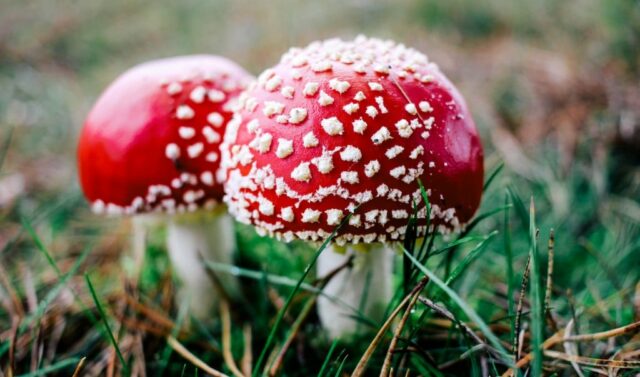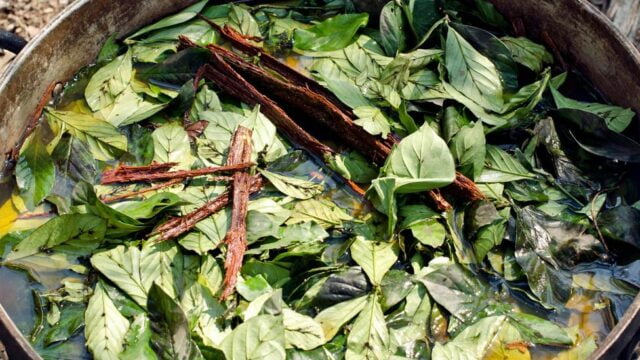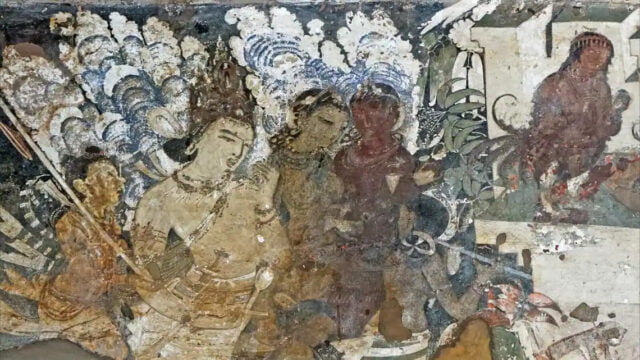There is a certain amount of fascination we attach to mind-altering drugs. Our curious minds love to imagine what it would be like to see things differently!
Psychedelics— the intake of which makes you hallucinate— the thing behind the making of some of the great artists, was first discovered in the winter of 1938, at a laboratory located somewhere in Switzerland, by the Swiss chemist Albert Hoffman, through the synthesis of the hallucinogenic substance LSD (lysergic acid diethylamide) or known more colloquially as acid.
Almost a decade after its official discovery, British psychiatrist Humphry Osmond came up with the term “psychedelics”. “To fathom hell or soar angelic, Just take a pinch of psychedelic,” he wrote in a letter to the writer Aldous Huxley.
In the 1960s, Gordon Wasson pointed out the theory that the Amanita muscaria mushroom was, in fact, the ancient Indian psychedelic called soma.
Psychedelics in Ancient India

First recorded in the Rigveda (1500 BCE), Soma was a drink that was supposed to present one with immortality. Soma is a Vedic Sanskrit word, literally translating to “distil, extract and sprinkle”.
The Rig Veda widely explains the ways through which to extract the juice of a plant, the identity of which is unknown. It was inspired by the Rig Vedas that author Gordon Wasson came up with his Opus, titled “Soma: Divine Mushroom of Immortality.”
He proposed that the much-talked-about Soma was in fact the mushroom, Amanita muscaria.
The book was so beautifully detailed, it sparked a lot of debate and attention amongst enthusiasts and scholars alike. After many argumentative decades, scholars came to the conclusion that it was impossible for Soma to be a mushroom because, in the Rig Vedas, the plant has been described to have leaves and flowers. The recipe includes the juicing of the stalks of the plant, which of course, a mushroom lacks.
Many believed that Soma could be cannabis, but cannabis had a name of its own in the texts. It was called Bhaang, which in modern times, is a beverage consumed during the Spring festival, or Holi.
Also Read: The Hippie Trail: Tracing The Arrival Of The Hippie Subculture To India
Demystifying the Mystery

Another popular theory was proposed by Dr. Matthew Clark. He proposed that Soma was not just one plant but a brew of many plants.
Because it included plants containing both MAO inhibitors and DMT, he hypothesised that Soma could have been a parallel to ayahuasca. DMT is orally active thanks to MAO inhibitors, resulting in a strong mystical experience.
Clark backs up his claim with some intriguing evidence, including the fact that soma preparation in the Vedas is quite similar to ayahuasca preparation, the similarities between ayahuasca rituals and ancient Vedic rituals, and the fact that soma is referred to as a purgative in the same way that ayahuasca ingestion frequently results in a period of intense vomiting known as “la purga.”
Clark is still conducting research and discovering plants native to India that have the required MAO inhibitors and DMT, but his notion marks yet another fascinating attempt to uncover one of humanity’s most cryptic ancient psychedelics.
India’s Hallucinogenic Past

The hunt for ancient psychedelic soma is part of modern man’s quest to learn more about our complex and personal relationship with psychedelic plants.
The more we learn about our ancient past, the more we realise how important psychedelics were in both healing and religious or mystical experiences.
The more we learn about how ancient cultures utilised and valued psychoactive plants, the more we’ll be able to draw on a wealth of knowledge about how to use these unique and powerful drugs safely, responsibly, and transformatively.
Image Sources: Google Images
Sources: Scroll, Psychedelic Times, The Guardian
Connect with the blogger: Debanjan Dasgupta
This post is tagged under: psychedelic, hallucinogen, magic mushroom, DMT, LSD, acid trip, history, Vedas, ancient India, a brief history of, psychosis, treatment, benefits of soma, health benefits, risks, hard drugs, psychedelic drugs, hallucinogenic substances, drugs in ancient India, marijuana
Other Recommendations:
In Pics: 5 Indian Artists And Bands You Should Hear If You’re Into Progressive Rock



































